All images courtesy of Ayers Rock Management
In the face of lousy label deals, a volatile audience, and persistent jarring with former members, Leatherwolf’s remaining original member Dean Roberts is preparing to unleash a comeback album backed by a new and improved triple axe attack.
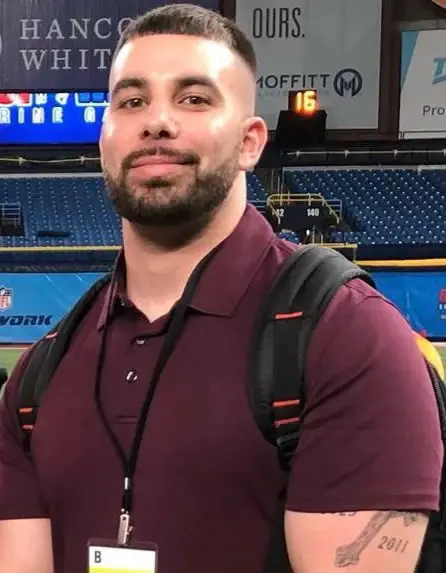
By Andrew DiCecco
adicecco5@gmail.com
As a heavy metal mainstay, Leatherwolf has traversed various incarnations since 1981. But its hallmark has always been Dean Roberts’ unabated aggression behind the kit.
Roberts appeared on Leatherwolf’s first three studio efforts, Endangered Species (1985), Leatherwolf (1987), and Street Ready (1989), before leaving the band, only to return in 1999.
Fifteen years after the release of its last studio album, New World Asylum, Leatherwolf returns with a vengeance with Kill the Hunted. The band’s sixth studio album is slated for Nov. 11 release via N.I.L.8 Records.
Roberts, who produced the album, is joined by Keith Adamiak (vocals), Rob Math (guitars), Luke Man (guitars), Wayne Findlay (guitars), and Barry Sparks (bass).
Roberts recently set aside some time with me to talk about Kill the Hunted and Leatherwolf’s legacy.
Leatherwolf’s “Hit the Dirt” took the metal community by storm over the summer and unveiled a new frontman, Keith Adamiak. How did Keith enter the fold?
After we parted ways with Mike Olivieri, I called an engineer friend of mine named Jake and asked him if he knew of any local singers. He had two names for me, and one of them was Keith. I called him, and he came over the next day to lay down a test vocal for “Only the Wicked.” When my wife happened to hear the vocal Keith had put down, she said, “Look no further!” Once Rob [Math] and I decided that Keith was the guy, he got involved in the creative process and started writing lyrics and vocals for the rest of the songs.
Why did you feel “Hit The Dirt” would resonate with fans as the lead single?
We just felt that we should come out with something uptempo that grabs you by the throat. “Hit the Dirt” is that type of song, relentless and in-your-face. It makes a statement. Lyrically as well. It’s not my favorite song on Kill the Hunted. But “Hit the Dirt” has good energy and works well as the album opener and as a single.
As a founding member, how vital is it to you that the legacy of Leatherwolf is preserved?
Very important. When you are the only original member in a band, and you’re “only the drummer,” you make yourself vulnerable to attacks. Especially when people on the outside that aren’t privy to any of the behind-the-scenes goings on can’t understand why the other original members aren’t in the band anymore, and they read half-truths and outright lies in interviews – as Carey told you, by the way.
Leatherwolf is near and dear to my heart, and I’m doing the best I can for the band’s legacy to be preserved and honored, musically and otherwise. For example, we finally managed to get Street Ready released digitally. Universal Music, who now owns the Island Records catalog, were completely unaware they even had Street Ready. I’ve also gotten the rights to the first album back from the owner of Tropical Records, so we’ll re-issue that one in the foreseeable future.
Kill the Hunted is slated for a fall release. How would you gauge the chemistry with this particular incarnation of the band?
It’s probably too early to say because we’ve only spent limited time together. The only show we’ve played with the current six-member line-up was the M3 Festival last May, and that went pretty well. I do like the balance we have right now between the three vets – Rob, Wayne, and myself – and the three younger guys – Keith, Luke, and Brice from Art of Shock, who’s been helping us out live on bass. Experience meets youth.
What was the blueprint for Kill the Hunted?
The blueprint was to make a kick-ass-sounding heavy metal record. Period. As much as I like our classic Island albums, they are of that era, and the sonics isn’t something I dig too much. That’s no diss on Kevin Beamish, who produced those albums. But that’s not how I’d want my album to sound today. I think Kill the Hunted blows those two Island albums away from a sonic point of view. You can now make better-sounding albums on your Pro Tools setup at home than we did back in the ’80s in state-of-the-art studios, spending 300.000 dollars. [Laughs]. I went into a nice studio in San Diego to record my drums. You can’t cut corners with drums if you want them to sound a certain way.
Describe Leatherwolf’s creative process.
It was a painstaking process that took way longer than anticipated for various reasons. It took almost three years from when we leaked the original “Henchman” to introduce the new line-up with Keith on vocals. At the time, Geoff [Gayer] and Paul [Carman] were in the band. And even Carey [Howe], who co-wrote one song, was in the picture for a brief moment before he up and disappeared; I have a good idea as to why now; Google “Carey Howe FTC.” Anyway, we started writing and tracking stuff, and then Paul, who lives in Colorado, decided to bow out because he didn’t have the time.
So, we needed a bass player. Our manager got in touch with Barry Sparks (MSG, Yngwie, Dokken), whom he knew from working with Cosmosquad. Barry was sitting at home like many musicians due to COVID and taking on session work. He’s a monster player, and his tracks are just killer. Barry got into the project and ended up writing the sort of Maiden-ish outro to “Enslaved,” which is the last thing you hear on the album. He also turned us on to Wayne Findlay as the third guitar player to complete the new Triple Axe Attack; they both played in MSG at one time.
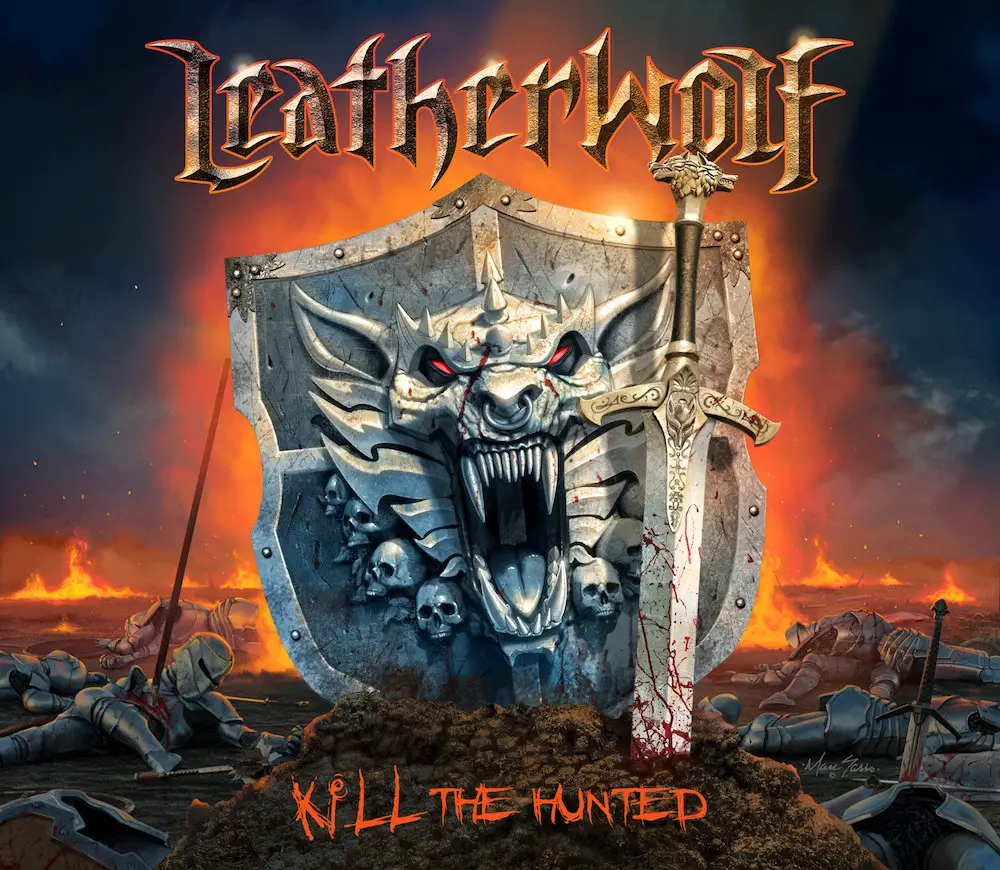
All images courtesy of Ayers Rock Management
What is the complementary effect of this guitar trio configuration, comprised of Rob [Math], Wayne [Findlay], and Luke [Man]?
It’s an excellent combination of youth and experience; all three of these guys can play. Otherwise, they would not be in the band. Because the original Triple Axe Attack set the bar pretty high, and that level has to be maintained. I don’t think most people realize how good Rob Math is. He is the most skilled guitar player to ever play in Leatherwolf. And Luke is getting better all the time and put down some great leads on the album. Wayne came in toward the end and played some keyboard parts, but he doesn’t play guitar on the album. So far, we’ve only done one show with this line-up at M3, as I mentioned earlier, but the chemistry was apparent. Rob and Luke are the lead guys; Wayne comes in on harmonies. And it’s fantastic to have him on keyboards because we haven’t had that element live, and it allows us to add specific songs to the setlist.
What was the inspiration behind “The Henchman?”
Keith wrote the lyrics to that one. “The Henchman” is about our inevitable struggle with our inner selves and conquering our destiny but doing so with grace and dignity so that we don’t “become the man we’re running from,” as the lyric goes. Some people go throughout their entire life without being able to connect with themselves deep enough to figure out how to get past their ego. But the main reason is that they didn’t know they had to look within. Maybe this song can help someone realize they have the power to be anyone they want and not let past traumas define them.
How did Whitesnake’s Joel Hoekstra become involved?
Joel was similar to Barry: a guy who’s usually super busy and on the road, who was forced to sit at home due to COVID, not able to make a living. Joel had done a few virtual projects posted on YouTube, so we thought we’d hit him up to see if he would be interested in playing on a few things as a paid session guy. He was and sent us his tracks back within a week or so. Stunning player and a total pro! He’s on a few bars on “The Henchman” alongside Rob and the Japanese bonus track, a remake of “Thunder” from Street Ready. We also have him on a few other things we’ll release down the line.
What was your favorite track to play on?
I’d probably say “The Henchman.” It’s a song that’s more about feeling than technique. It was just more of a vibey, flowy song for me. And I like “Nobody” as well because it’s got some intricacy to it. It’s a rare song with a drum roll progression throughout the chorus.
What other hats did you wear during the sessions for Kill the Hunted?
Well, for one, I financed the whole project from top to bottom. Same with World Asylum and Unchained Live. For the last 20 years, I’ve been the only one in Leatherwolf to put his money where his mouth is. These albums would not exist without my commitment. Of course, Geoff has always been the primary writer; he and I had an excellent creative partnership. Unfortunately, there are issues with Geoff – Google is your friend – that seemingly make working long-term impossible. He hates me now and claims I stole his songs which is bullshit because he is getting full credit and publishing on everything he co-wrote.
So with Geoff out of the picture again halfway through making the album, I was put into even more of a producer/overseer role than before when it was the two of us. Rob helped a lot with the guitars; he became the de facto main guitar player on the album. He not only did all his highly detailed parts, but he also had to assume extra lead duties and re-do Geoff’s rhythms because we had to wipe all of his parts to protect ourselves in case of a possible injunction, which would’ve jeopardized the album’s release. We couldn’t allow that to happen.
What factored into your decision to enlist Randy Burns as your engineer and Tom Baker to master the record?
As we got close to finishing the album, we did not have a mixer. We touched base with Jacob Hansen in Denmark, who had mixed World Asylum. But Jacob is a very in-demand guy these days after all the success he’s had with Volbeat and others. In the end, he didn’t have a window that lined up with ours. Our manager then discovered that Randy Burns was back in business after a long layoff, so we thought, “Let’s just get in touch with him to see if he’s available and into it.” So, we sent him a few songs for a test mix, and what he sent us back impressed us. Randy is just damn good!
Having worked with him way back when made for a cool full-circle moment. The Leatherwolf EP was a more accurate representation of us than what we turned into when we signed with Island. Because when we worked with Kevin Beamish, it was all mainly about commercial appeal and having radio singles. Kill The Hunted, in a way, is a throwback to the early Leatherwolf days when we were a no-frills heavy metal band. As far as Tom Baker goes, he’s been our go-to mastering guy for years, and his resume speaks for itself. An absolute legend in the mastering business.
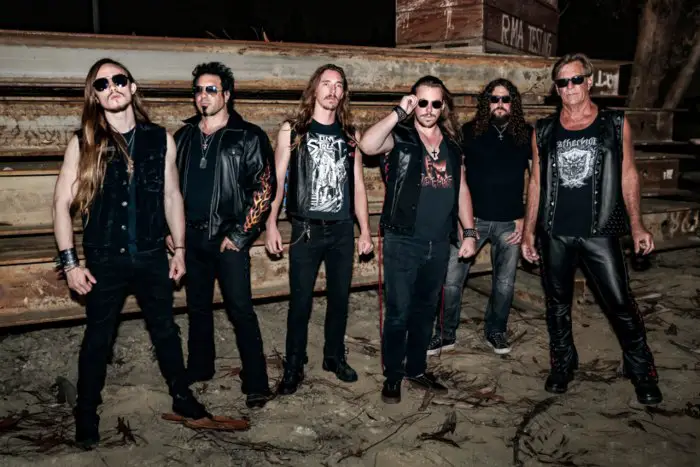
All images courtesy of Ayers Rock Management
What gear did you use to record the album?
I recorded my drums on an API board at the studio in San Diego. I used my Yamaha Studio Series kit with two custom-built bass drums. We used custom-built cabinets similar to the EVH cabinets to record guitars. Our long-time guitar tech, Tim Wilson, and I built it. We also used the Portico II, API, and the Shelford channel strip. Rob used a bunch of different Jackson Guitars. One was a Swee-Tone, and only 12 of those were ever made but never released to the public. We used the Scott Ian Jackson for rhythms and a custom-made Charvel. We used the Manley Voxbox and Shure SM7 vocal mic for vocals, known as “the Michael Jackson microphone” because he used it on “Thriller.”
How has your drumming evolved over the years?
I’d say that over the years, I’ve learned to play more from the heart and emphasize feel rather than trying to impress anybody with technique. When I look back at our records for Tropical, Island, and Massacre, I’m definitely a better, more well-rounded player now. I’ve become a more solid, confident player from album to album.
What hindered Leatherwolf from a significant breakthrough in its heyday?
In hindsight, signing with Island Records at the time wasn’t the wisest decision. But Island had Anthrax, who was doing well, so it seemed they knew what they were doing at the label. And we thought the fact that Island didn’t already have a bunch of other metal bands might work in our favor. It didn’t, and we did not get the type of support from Island we would’ve needed to break through to a higher level.
The other factor is that when you look back on the ’80s and who had significant success, it was either the glam/sleaze type bands like Mötley Crüe, Ratt, Poison, or Guns N’ Roses. Or Metallica, on the other end of the spectrum, was spearheading the heavy movement. Musically we were neither of those and, in a way, didn’t fit in. We were in the same boat as Armored Saint, Savatage, and other British metal-influenced American bands. We all had major deals, but none of us had a gold record.
Is it fair to say that Leatherwolf has a new lease on life with this album?
I sure hope it’s gonna give us a boost. I’m under no illusion that we’re gonna sell a boatload of records; those days are pretty much over for all of us. But I do hope that Kill the Hunted will give us a certain level of exposure in the eyes of the industry. I hope it allows us to tour more both here in the US and abroad. If we can raise our live profile, that would benefit us immensely.

All images courtesy of Ayers Rock Management
– Andrew DiCecco (@ADiCeccoNFL) is a contributor for vwmusicrocks.com and may be reached at adicecco5@gmail.com

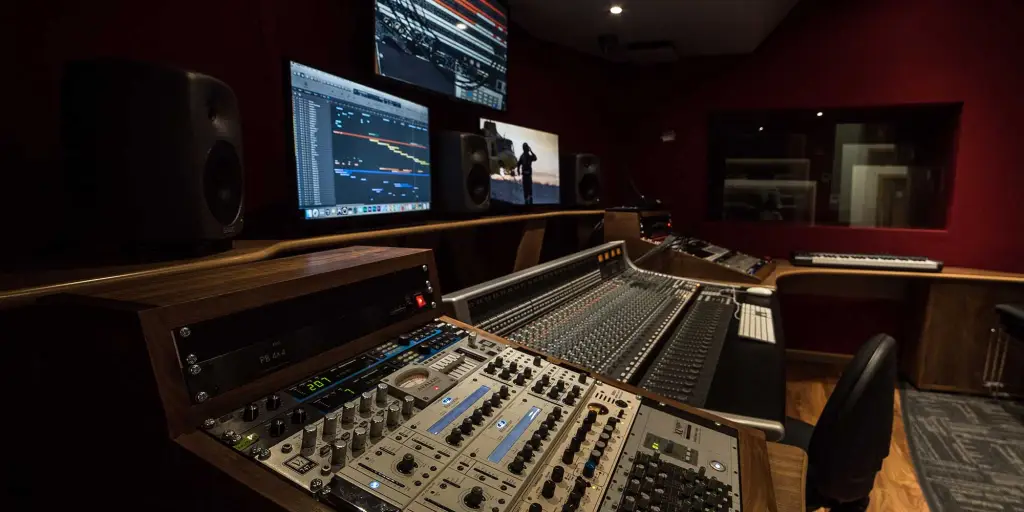

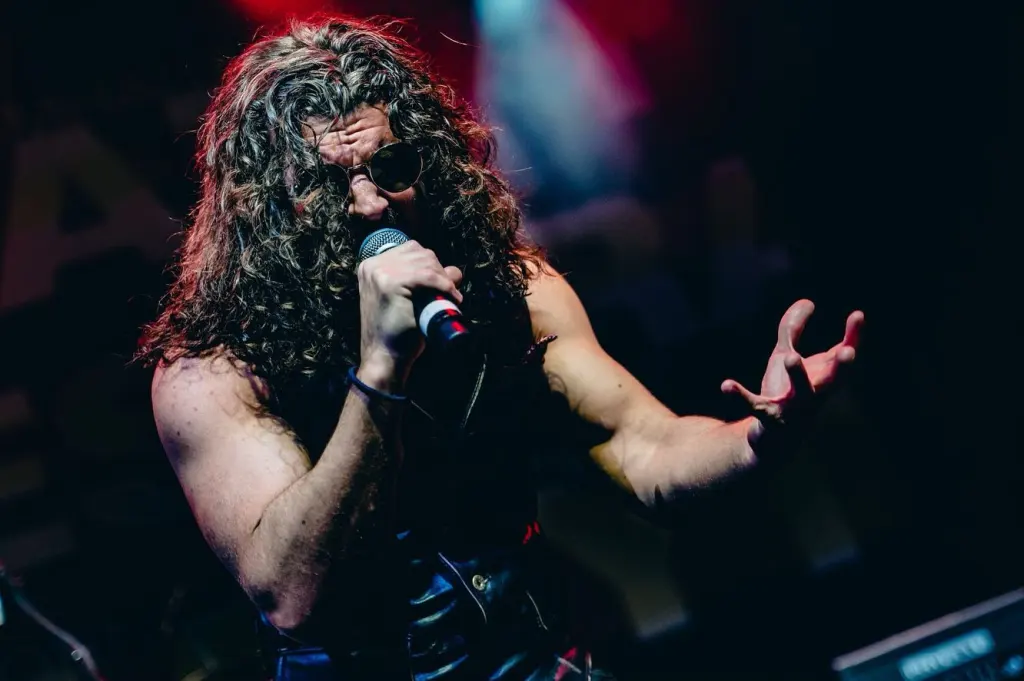
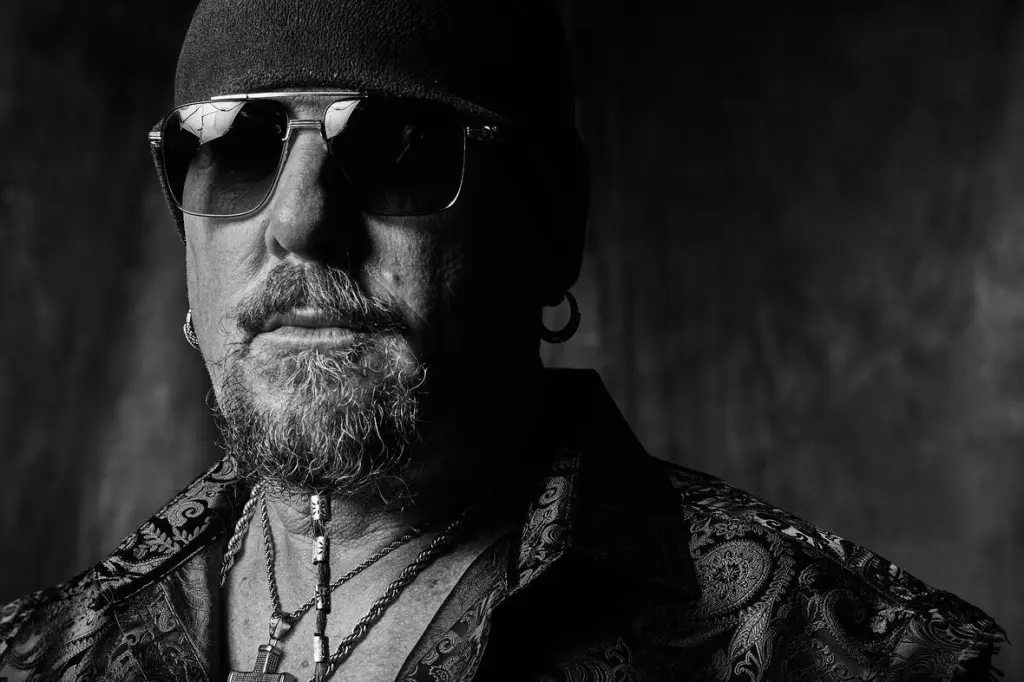
Leave a Reply